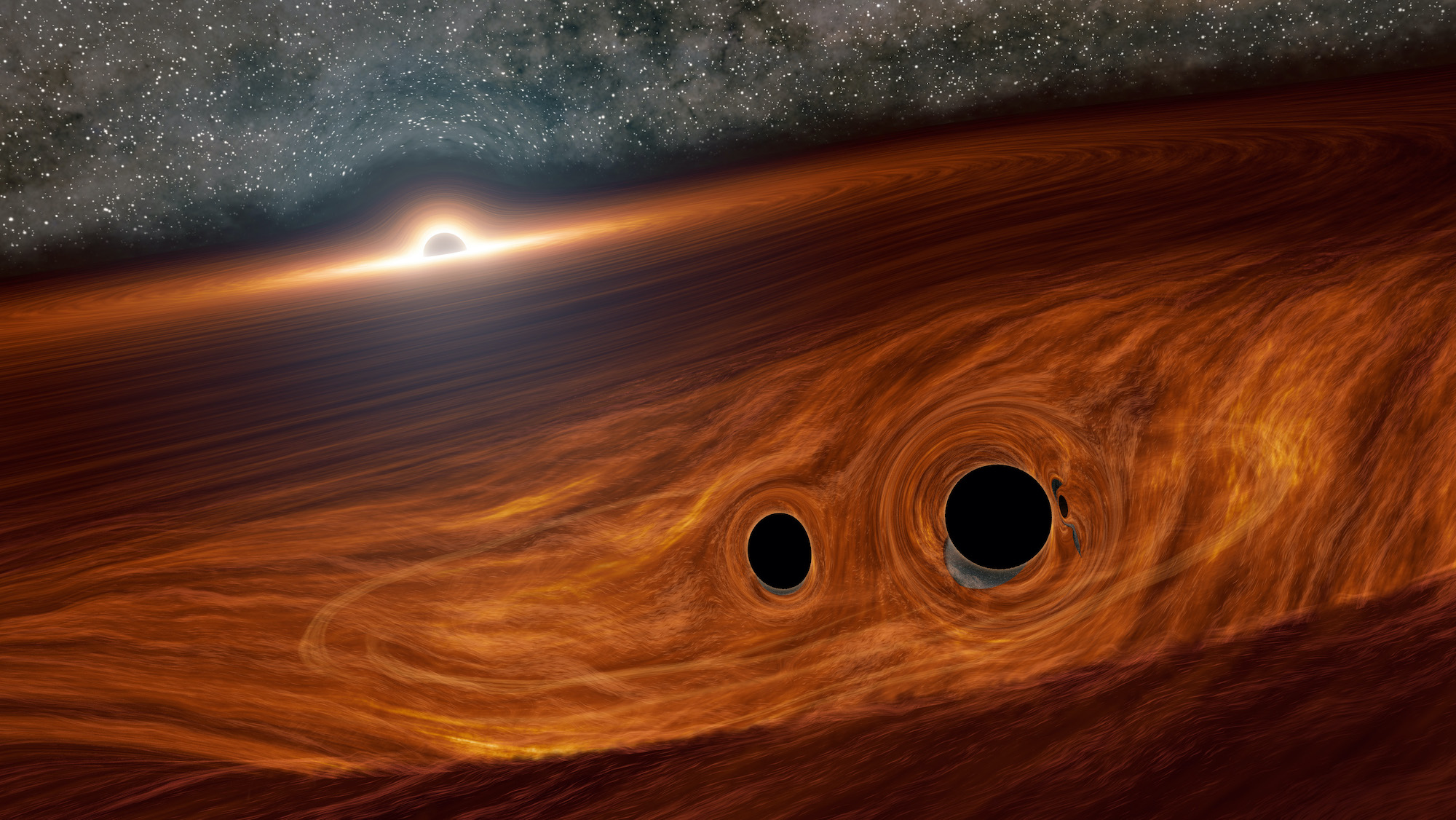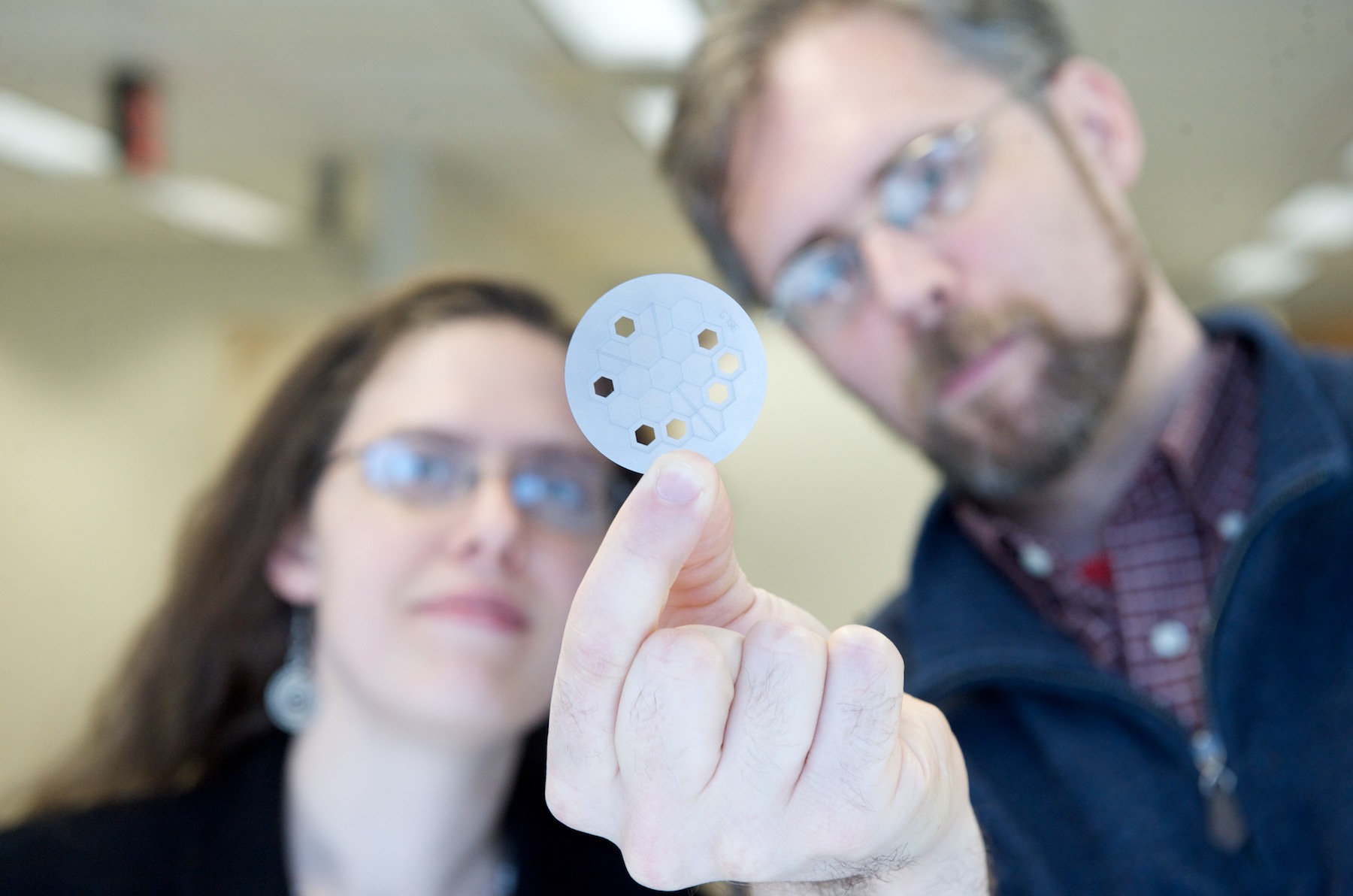
June 25, 2020
Borough of Manhattan Community College (BMCC/CUNY) Science Professors Barry McKernan and K.E. Saavik Ford are part of a team of scientists that has seen evidence of what could be the first light ever detected from a black hole merger.
When two black holes spiral around each other and ultimately collide, they send out ripples in space and time called gravitational waves.
Because black holes do not give off light, these events are not expected to shine with any light waves, or electromagnetic radiation— but Ford and McKernan theorized about ways in which a black hole merger might explode with light.
Now, astronomers have seen actual evidence of one of these light-producing scenarios.

Ford and McKernan, who are both research associates at the American Museum of Natural History’s Department of Astrophysics, co-authored a study detailing these groundbreaking findings with researchers from the California Institute of Technology (Caltech) Zwicky Transient Facility (ZTF) at Palomar Observatory near San Diego.
Matthew Graham, a research professor of astronomy at Caltech and the project scientist for ZTF, is the lead author. Their findings are available in the current issue of Physical Review Letters.
Specifically, Ford and McKernan, who also teach at the CUNY Graduate Center, spotted what they believe might be a flare of light from a pair of coalescing black holes. The event was observed the National Science Foundation’s Laser Interferometer Gravitational-wave Observatory (LIGO) and the European Virgo detector on May 21, 2019, in an event called S190521g. As the black holes merged, jiggling space and time, they sent out gravitational waves.
A robotic survey of the sky corroborates LIGO finding
As this gravitational wave event was captured by LIGO as well as the European Virgo detector, ZTF was performing its own robotic survey of the sky that captured all kinds of objects that flare, erupt, or other variations.
One of the flares caught by that survey was generated by a distant active supermassive black hole, or quasar, called J1249+3449 — and pinpointed to the region of the gravitational-wave event S190521g.
The flare was delayed by a few weeks after the gravitational wave event. During that time, the merged black hole erupted out of the giant gas disk. The resulting flare had energetics that matched a kicked black hole around 100 times the mass of the earth’s Sun traveling through a dense gas disk at about 150 miles per second.
At that speed, a person could travel from New York City to Boston in just one and a half seconds according to McKernan.
“At the center of most galaxies lurks a supermassive black hole,” said Ford. “It’s surrounded by a swarm of stars and dead stars, including black holes. These objects swarm like angry bees around the monstrous queen bee at the center.”
Black holes can briefly find gravitational partners and pair up, she says, but usually, they lose their partners quickly to the mad dance.
“But in a supermassive black hole’s disk, the flowing gas converts the mosh pit of the swarm to a classical minuet, organizing the black holes so they can pair up,” Ford says.
A tremendous advance for astronomy, enabling new ways of testing expansion of the universe
McKernan says if this was in fact the first light ever observed from a black hole merger, it is a tremendous advance for astronomy and physics.
“It tells us where many of the black hole mergers are actually happening, so we can zoom in on and track them, for the first time ever,” said McKernan. “If we know exactly where these mergers are happening, we also can use the gravitational wave signature as a really cool new way of testing the expansion of the Universe.”
McKernan says these findings tell researchers that the large disks of gas around supermassive black holes contain stars and smaller sized black holes.
“One thing we found here was that the shock from the gas originally around the black hole hitting the rest of the disk isn’t actually the main source of brightness,” said McKernan. “But, that shock process gives us the time before the real glow starts.”
The main glow seems to come mostly from gas that is rearranging itself around the black hole once it zooms off independently from the disk.
“Our picture of the universe just became more sophisticated, complicated, but also beautiful,” said McKernan.
In addition to teaching, both Ford and McKernan mentor BMCC students in research projects, guiding their analysis of data related to black holes and active galaxies.
Related stories:
Seeing Black Holes in a New Light
Research Award Opens Window on Distant Galaxy
More about the image at the top of the story: Little Black Holes in Disk of Big Black Hole—Artist’s concept of a supermassive black hole and its surrounding disk of gas. Embedded within this disk are two smaller black holes orbiting one another. Using data from the Zwicky Transient Facility (ZTF) at Palomar Observatory, researchers have identified a flare of light suspected to have come from one such binary pair soon after they merged into a larger black hole. The merger of the black holes would have caused them to move in one direction within the disk, plowing through the gas in such a way to create a light flare. The finding, while not confirmed, could amount to the first time that light has been seen from a coalescing pair of black holes.
These merging black holes were first spotted on May 21, 2019, by the National Science Foundation’s Laser Interferometer Gravitational-wave Observatory (LIGO) and the European Virgo detector, which picked up gravitational waves generated by the merger.
- BMCC Professors part of an international team of scientists
- Ford and McKernan are both research associates at American Museum of Natural History’s Department of Astrophysics
- Findings are evidence of light producing scenarios in Black Hole mergers

